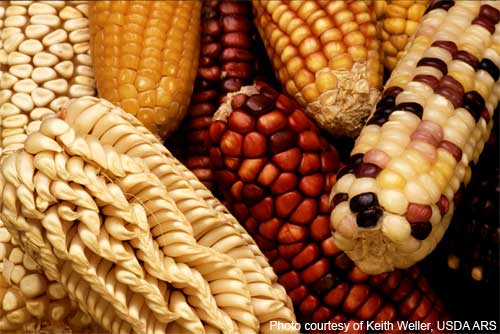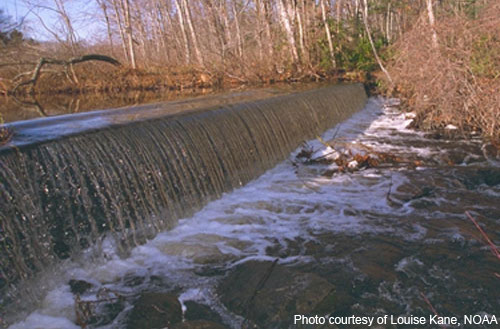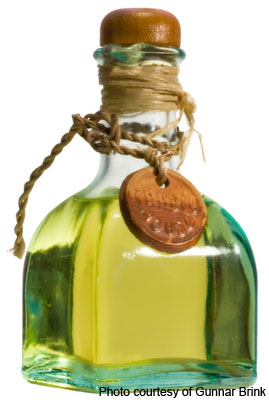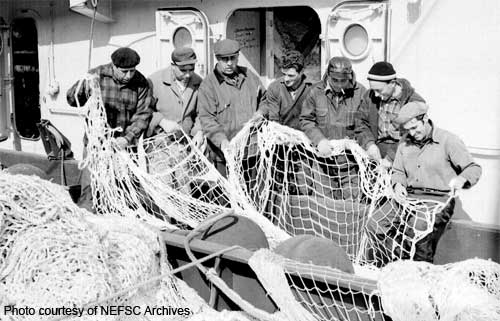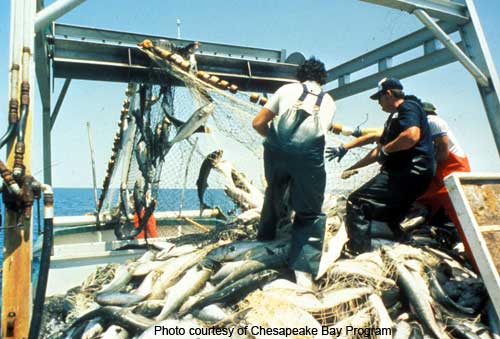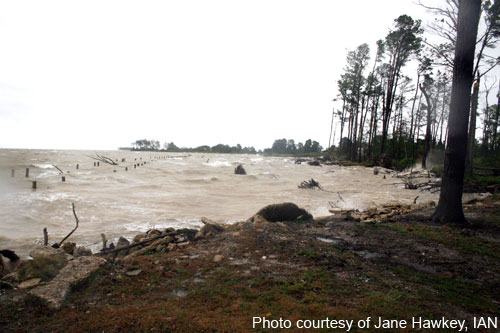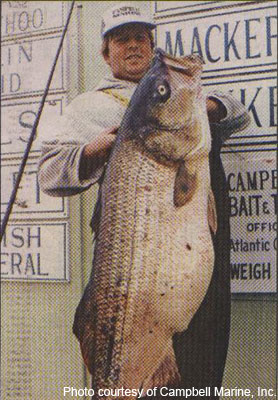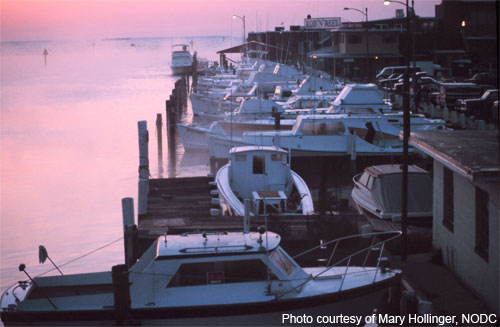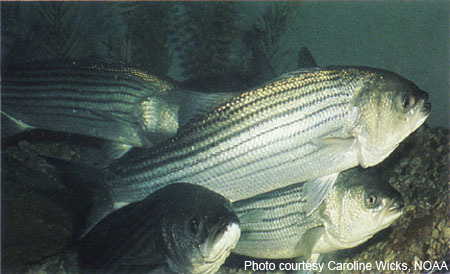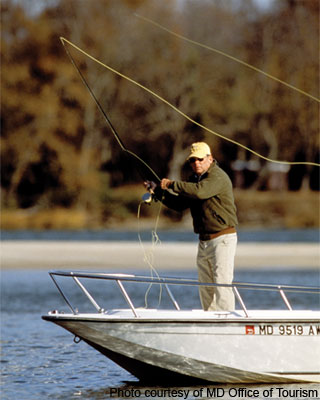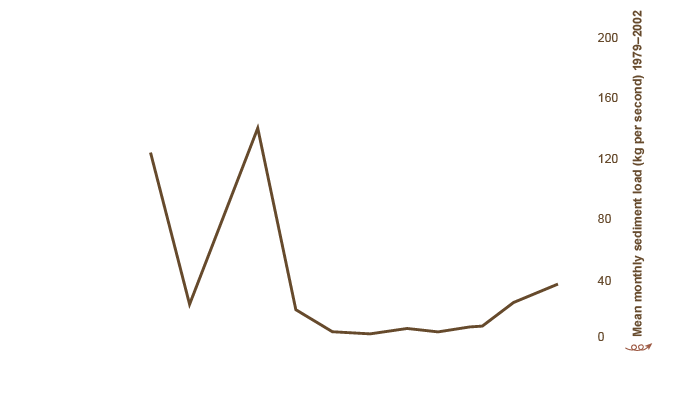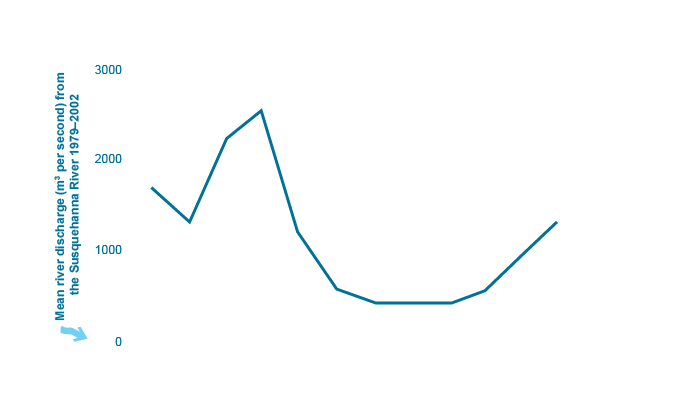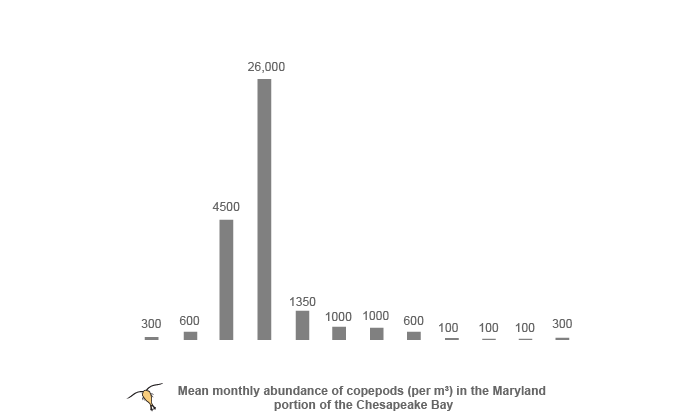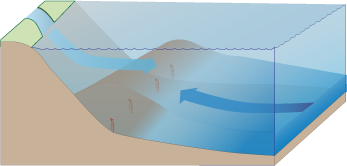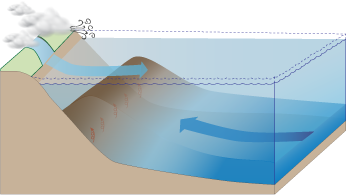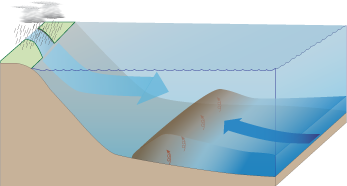How have striped bass populations changed over time?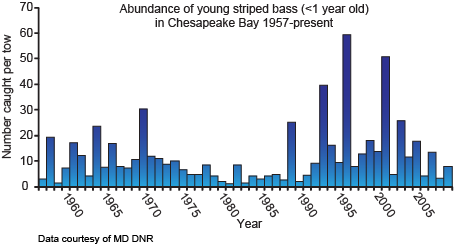
Striped bass populations have experienced dramatic changes, especially in the Chesapeake Bay. Historically abundant, early explorer Captain John Smith wrote in his journal that his men hauled in more striped bass than their nets could handle. As improved technology made it easier for more people to catch more fish, fishing pressure increased. As a result, striped bass were overfished in the Chesapeake Bay and their populations plummeted. Eventually, the government passed a moratorium, or ban on fishing, and populations were able to recover.
Activity: Historic Trends Word Sequence Word Sort
(Hint: Compare the graph of fish abundance to what happened at that time in history)

How do changes in the ETM nursery area affect striped bass?
Seasonal Trends
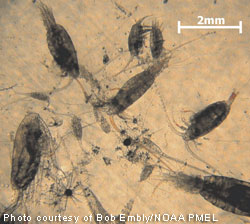 Remember that particles (sediment and detritus), copepods, and striped bass larvae become trapped in the ETM? It turns out that the amount of particles and copepods in the ETM and the strength of the currents that trap them change throughout the year. In the spring in particular, rain and snowmelt cause a large volume of fresh water to flow into the estuary, delivering increased loads of sediment and detritus that wash off the land. Copepods feed on detritus, so with more food available their population increases. More copepods mean more food for striped bass larvae. More suspended particles and stronger currents in the ETM mean darker water to hide the vulnerable larvae from predators. Remember when striped bass spawn? (In the spring!) It works out well that striped bass spawn during the time of year when their larvae’s food is most abundant.
Remember that particles (sediment and detritus), copepods, and striped bass larvae become trapped in the ETM? It turns out that the amount of particles and copepods in the ETM and the strength of the currents that trap them change throughout the year. In the spring in particular, rain and snowmelt cause a large volume of fresh water to flow into the estuary, delivering increased loads of sediment and detritus that wash off the land. Copepods feed on detritus, so with more food available their population increases. More copepods mean more food for striped bass larvae. More suspended particles and stronger currents in the ETM mean darker water to hide the vulnerable larvae from predators. Remember when striped bass spawn? (In the spring!) It works out well that striped bass spawn during the time of year when their larvae’s food is most abundant.
(Hint: Check the boxes below to explore how sediment, river flow, and copepod abundance change throughout the year in the Chesapeake Bay. What patterns do you see over the time striped bass spawn?)

Yearly Trends
So we know that as rainfall and river flow increase in the spring, conditions become more favorable for the survival of striped bass larvae. During some years, the conditions in the ETM are particularly beneficial for the larvae. When it rains significantly more than average in a given year, more river water delivers more particles to feed more copepods. Also, higher river flow creates stronger currents in the ETM, so striped bass larvae have an even darker place to hide and are more likely to be trapped in the ETM along with their plentiful copepod prey. Therefore more young striped bass are able to survive in these rainy wet years.
Check out the Maryland Department of Natural Resources Juvenile Striped Bass Survey for details on yearly trends
Daily Trends
In the Chesapeake Bay, conditions in the striped bass ETM nursery change from day to day. Tides cause the salt front to move back and forth twice per day. In addition, winds blowing on the water can change circulation patterns. Strong winds can blow down-estuary for a few days, causing water levels to drop in the upper estuary. As a result, the salt front moves up-estuary. Big pulses in river flow from rainstorms can also can push the salt front down-estuary and deliver a lot of suspended sediment to the ETM region.
Wind and rain events can influence how striped bass eggs are transported to the ETM nursery area. If striped bass spawn during a wind or river pulse event, the eggs might get carried past the salt front and hatch in an area where prey is not abundant. Therefore, short-term weather events can have a big impact on striped bass survival.
Dr. Elizabeth North's Website: More advanced information and animations about fish and physics.
Activity: I have the question, who has the answer


